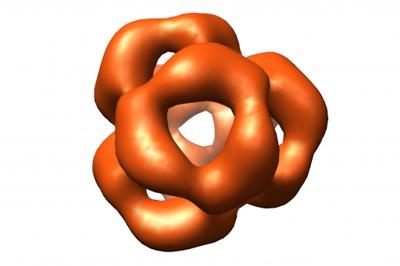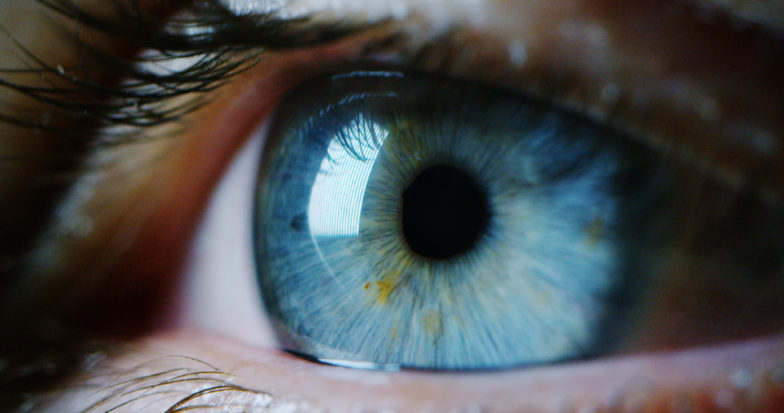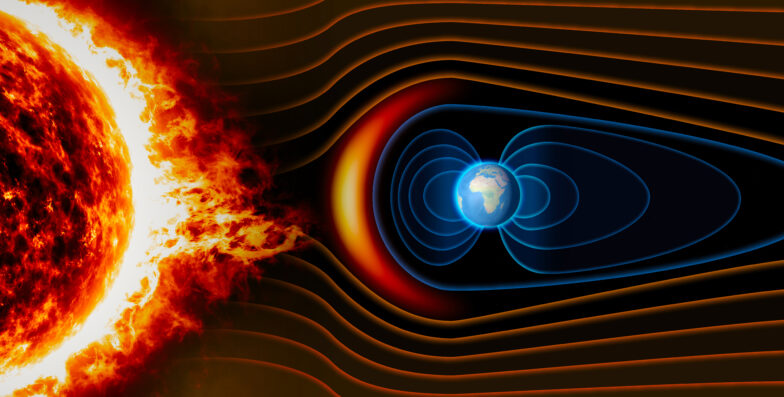Seeing the Wonder of Transparency
Vision also requires a transparent medium—beginning with the eye and extending out into the cosmos. And thankfully, humans enjoy finely tuned transparency, as the following hierarchy—from the macro-level sky perspective to the micro-level inner eye view—powerfully demonstrates.
Transparent Atmosphere and Instruments
Outer space is clear and filled with invisible dark energy. This transparent “nothingness” (it’s really a “something”) provides a backdrop for the great cosmic choreography we know as astronomy—the dance of planets and galaxies, suns and moons, and all we know of the material world, including Earth. This intergalactic space allows photons (light particles) to travel at the speed of light for billions of years to our telescopes. Gas clouds could blot out the view were it not for superwinds from the high-energy light of ancient massive stars. Also, our solar system’s just-right location between the Milky Way Galaxy’s spiral arms provides an ideal window for observing the heavens.
Earth’s atmosphere, as we know it, is also transparent. The planet’s early atmosophere was hazy and thick with methane. Gradually it cleared up thanks to oxygenating life-forms and, thus, the Sun, moon, and stars became visible, filling the sky with otherworldly beauty and providing natural timekeepers.
Even our equipment for observing the cosmos requires optical telescopes furnished with clear glass lenses and reflective mirrors in order to collect and capture photons. Silicon dioxide, the key component used in making optical glass, possesses unique chemical properties that give it the necessary clarity. Oxygen bridge bonds between silicon atoms prevent it from crystallizing upon heating and cooling at normal temperatures, which would cloud the lens. In other words, just-right chemistry allows us to build powerful telescopes that extend our scope of vision.
Clear Eyeballs
Our transparent atmosphere and clear eyeballs allow photons to reach the retina—making possible the wonder of vision. But first, light must travel through several protein structures. The cornea (the “pinhole to the world) protects the rest of the eye even as it allows light to enter. This means all five layers of the cornea must be transparent. The outermost corneal epithelium is made of cells that are constantly produced and shed every week. Next is a dense fibrous sheet of connective tissue called Bowman’s layer. Third, the corneal stroma is the thickest layer. It is composed of collagen fibrils, the regular arrangement and uniform spacing of which is what enables the cornea to be perfectly clear. Descemet’s membrane, the fourth layer, begins as a very thin membrane that gradually thickens throughout life. Finally, the innermost corneal endothelium is bathed in the clear aqueous humor that fills the space between the cornea and the iris and pupil. Behind the cornea is the crystalline lens. It changes shape to bend light (refraction is another convenient property of light) to form a clear image on the retina. Here is the key point: all of these structures must retain their transparency in a dynamic biochemical environment within the eyeball or blindness will result.
Two ocular fluids—aqueous humor and vitreous humor—bathe the eyeball and also must be transparent. Aqueous humor is a thin, clear, watery fluid that fills the eye’s anterior and posterior chambers. It nourishes the cornea and lens by supplying nutrients. High pressures can result in glaucoma while low pressure can distort eye structures and degrade vision. Vitreous humor is the fluid-like gel located in the posterior chambers of the eyes. It is 98–99 percent water with trace amounts of collagen protein and other chemical constituents. Dynamic chemical processes within each cell must keep this fluid’s ion concentrations within a very narrow range or blindness would set in quickly.
If water were not transparent to visible light—hence, appearing clear—ocular fluids would cloud our vision. Water’s transperancy is a complex topic that requires deeper physics. Nevertheless, clear water is perfect for bathing eyeballs!

Protected Vision
Finely tuned features of the eye continue down one more micro level as we examine protein molecules that make up the eye’s structures. A concentrated mix of several proteins make up the human eye. Protective proteins in the lens prevent the structural proteins from clumping into cataracts, which cause blurry vision. One of these proteins is called alpha beta-crystallin (ab-crystallin), a globular molecule made of 24 subunits, like a perforated soccer ball (see figure 1). It chaperones (assists) other proteins and belongs to a group of small heat-shock proteins that prevent clumping under stress conditions. Without this process blindness would result.
Our Bright Future
Natural vision can be obscured by gas clouds in deep space, vapor clouds in the sky, or cataracts in the eye. That these obfuscations are relatively rare is a wonder which defies material explanation. As the Bible points out in 1 Corinthians 13:12 (ESV), humans can experience clouded spiritual vision as well.
For now we see in a mirror dimly, but then face to face. Now I know in part; then I shall know fully, even as I have been fully known. — 1 Corinthians 13:12, ESV
I believe such spiritual blindness can obscure human ability to appreciate the exquisite design in the details of nature and of our bodies. The finely tuned physics, exquisitely engineered chemistry, and precisely regulated physiology behind the transparency that makes vision possible shows that planning, purpose, and powerful reasoning must be in play. May we diligently learn and communicate these elegant discoveries so they will be clear to everyone.






